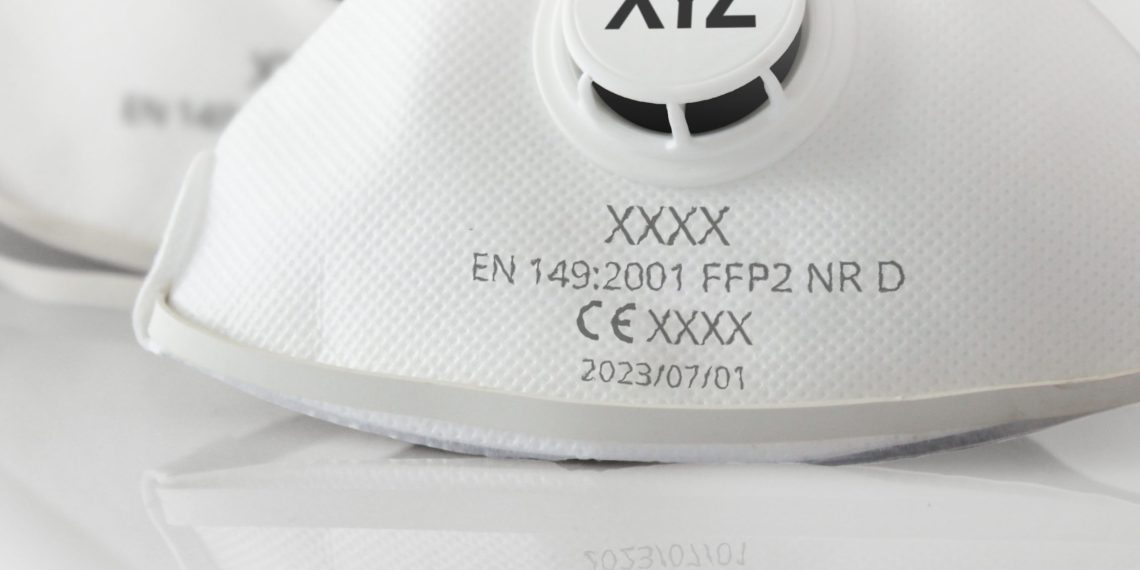On 18 January 2021, Bavaria introduced mandatory FFP2 masks in supermarkets and public transport — other German states are now following suit with similar regulations. It should come as no surprise that sales of FFP2 and FFP3 masks have soared in recent months, but with an extended FFP2 mask requirement into everyday life, sales will continue to rise. This mask requirement will open doors in several directions. On the one hand, it will protect the population from the further spread of Covid-19, while allowing some companies to expand their product portfolio. On the other hand, however, there is also the danger that counterfeiters will take advantage of the desperate situation and put harmful masks on the market. This means that not only end consumers run the risk of buying counterfeit goods, but also hospitals and companies sometimes have to equip their staff with FFP2 and FFP3 masks and can equally fall victim to fraudsters — the consequences of using counterfeit respirators can be devastating. The range is large, there are many different types and designations of face masks, so it is difficult to keep track. So how can you tell if it is a fake?
The danger of counterfeit FFP2 masks
In addition to hospitals and businesses, consumers will now increasingly stock up on FFP2 masks before they end up with a respirator shortage. This can lead to rushed online purchases as going to the pharmacy or shops is avoided if possible. Especially with online purchases, the possible authenticity of FFP2 masks can only be checked to a limited extent. However, supermarkets have also made erroneous purchases in the past and thus unintentionally put counterfeit goods into circulation. Users of FFP2 masks understandably assume that they are now adequately protected against aerosols and viruses. But non-compliant FFP masks lull the user into a false sense of security. Protective barriers do not stand up to recommended use, the masks soak through more quickly or they do not fit properly, allowing viruses to enter at open points. Poorly made masks can even introduce toxic fumes into the respiratory tract. For some companies, however, the rising demand is also an opportunity to retool production lines and expand into a new market — again, this should not be rushed and should be well researched.
Detect counterfeit FFP masks: The be-all and end-all for health
It is difficult to tell with the naked eye whether a respirator really offers the desired protection and is effective. Before FFP masks can be placed on the market in Europe, testing bodies carry out so-called conformity assessment procedures to certify the protective performance. The European PPE Regulation (2016/425) regulates the exact labelling requirements for respirators.
If you want to recognise whether it is a counterfeit FFP mask, it is first worth taking a look at the CE marking. If the CE mark is missing altogether, you should refrain from buying and using it. Adjacent to the CE mark, the test centre (4‑digit number) must be listed. In Germany, there are currently two recognised test centres, one is Dekra Testing and Certification GmbH with the test number 0158, the other is the Institute for Occupational Safety and Health of the German Social Accident Insurance (IFA) with the number 0121. If the numbers shown on your mask differ from these, you should check the number of the test centre. In the past, fictitious number combinations have been used or testing bodies have been indicated that do not carry out the conformity assessment procedure for FFP masks — an overview of all testing bodies approved in the EU (Notified Bodies) can be found here. Make sure that the words “Personal Protective Equipment” (PPE) are written under the test body. In addition to the CE marking, there must also be a CE certificate; here you should insist on a European test protocol and not trust the statements of the seller.
Another sign of inferior mask quality is poorly legible or smeared labelling — here, the correct ink is also important when labelling respirators. FFP masks are characterised by the fact that they absorb moisture very slowly, which means that water-based inks lead to smeared labelling. FFP masks require fast-drying ethanol-based inks to ensure high-quality coding. Putting on and taking off the masks also creates the possibility of users coming into contact with the marking — so the inks should also meet various requirements to be safe for the user and not cause skin irritation.
Finally, the fit of the FFP mask is also important — if air can get out of the mask through the sides, it will also not provide sufficient protection to filter contaminated air before it enters the mask.
The market is large — rely on the knowledge of experts
At the end of the day, it’s all about personal safety and health. In general, hasty or overpriced purchases should be avoided. To make it easier for consumers, the Federal Ministry for Economic Affairs and Energy has launched a matching platform for protective equipment offers, through which suppliers of certified FFP masks can be found quickly and easily. If you have already purchased FFP masks whose protective function is questionable, a list of all currently known hazardous products is also available through the Federal Institute for Occupational Safety and Health.
The market for manufacturing respirators can be lucrative, but it is imperative that manufacturers use high quality materials and proven labelling technologies and leave nothing to chance in order to obtain the necessary confirmation of conformity from the testing authorities. With over 40 years of experience in labelling and marking, our sector experts are here to help.
ELGi’s EG Series Air Compressors Deliver Energy
Alucosur, one of the leading Spanish surface treatment companies, fulfilled their need for high-quality and energy-efficient compressed air with EG...
Read more
















